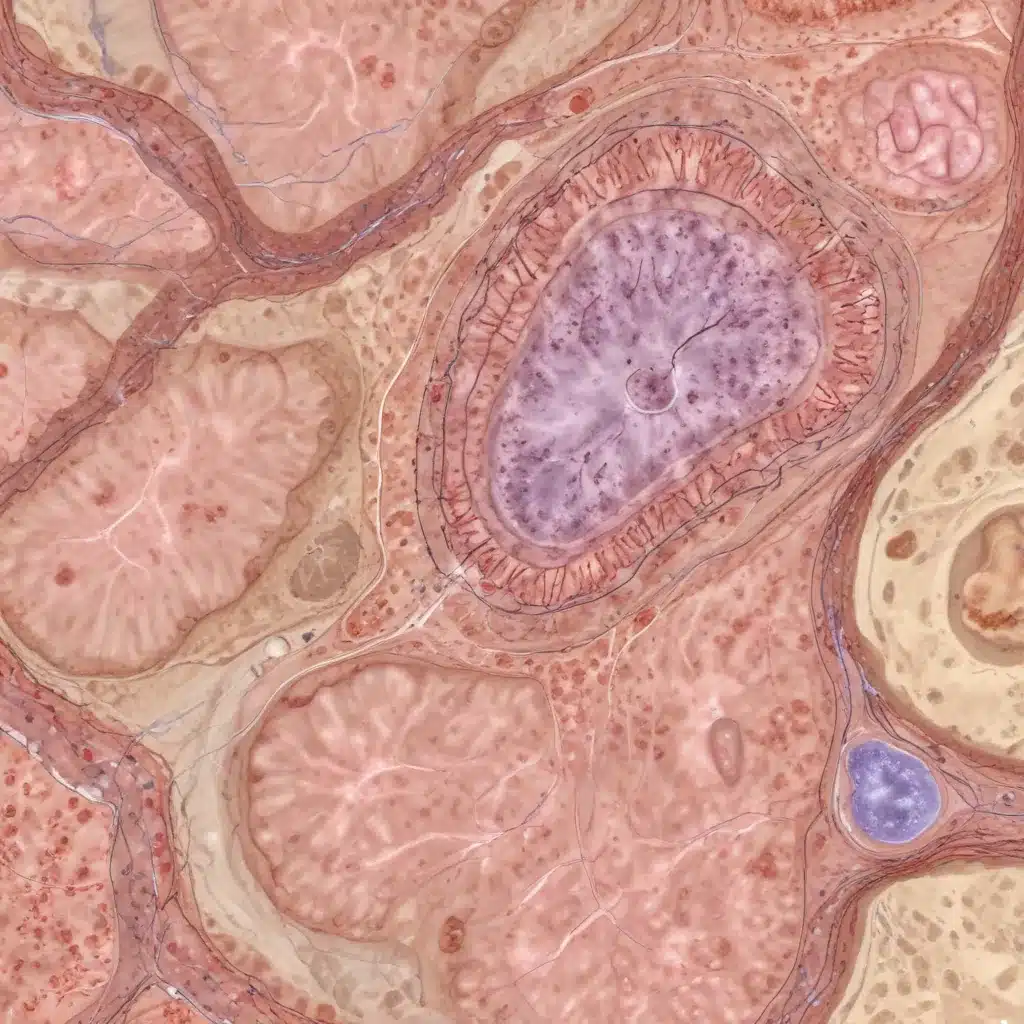
Mitochondria Remodeling in Endometrial Stromal Cells
The uterine endometrium is a dynamic tissue that undergoes dramatic changes in structure and function during the menstrual cycle. These cyclic transformations are critical for successful embryo implantation and pregnancy establishment. At the cellular level, the endometrial stromal cells (EnSCs) play a central role in this process, known as decidualization. Upon hormonal stimulation, the EnSCs undergo a remarkable metamorphosis, rapidly expanding their secretory machinery to produce an array of matrix proteins, cytokines, and growth factors essential for embryo implantation.
Recent studies have revealed that this functional transition in EnSCs is accompanied by a profound remodeling of the mitochondrial network. Mitochondria are essential organelles that serve as the primary energy hubs for cellular activities, powering diverse physiological processes such as cell proliferation, growth, and differentiation. The morphology and dynamic behavior of mitochondria are tightly regulated through continuous fission and fusion events, a process known as mitochondrial dynamics.
In this article, we will delve into the intricate relationship between mitochondrial remodeling and the decidualization of endometrial stromal cells, exploring the underlying mechanisms and their implications for endometrial physiology and reproductive health.
Mitochondrial Dynamics during Decidualization
Upon hormonal stimulation, the mitochondrial network in decidualizing EnSCs undergoes a remarkable transformation. The mitochondria quadruple in size, establishing more extensive contacts with the endoplasmic reticulum (ER). This intricate reorganization of the mitochondrial network results in a significant increase in the respiratory capacity of the decidualized cells, allowing them to meet the heightened energy demands of their secretory phenotype.
The molecular mechanisms driving this mitochondrial remodeling process involve the coordinated expression of numerous genes encoded in both the mitochondrial and nuclear genomes. Decidualization triggers the upregulation of various genes responsible for mitochondrial biogenesis, fission, and fusion, as well as those involved in lipid metabolism and calcium homeostasis.
A key player in this mitochondrial transformation is the transcriptional coactivator PGC-1α, which acts as a master regulator of mitochondrial biogenesis. During the early stages of decidualization, PGC-1α rapidly translocates from the cytoplasm to the nucleus, where it initiates the transcriptional reprogramming of mitochondrial genes. This process ensures that the mitochondrial network is appropriately scaled to support the increased secretory activity of the decidualized EnSCs.
Metabolic Rewiring during Decidualization
Alongside the expansion of the mitochondrial network, the decidualization process also involves a dramatic shift in the cellular energy metabolism of EnSCs. Decidualized cells exhibit a reduced reliance on glycolysis, the primary energy-generating pathway in non-decidualized cells, and instead increasingly rely on mitochondrial oxidative phosphorylation (OXPHOS) to meet their energy demands.
This metabolic switch is facilitated by the upregulation of genes involved in fatty acid β-oxidation, a mitochondrial pathway that generates ATP more efficiently than glycolysis. Notably, the production of octanoic acid, a medium-chain fatty acid, is significantly increased in decidualized EnSCs. Octanoic acid serves as an essential energy source for embryonic development, highlighting the critical role of mitochondrial metabolism in preparing the endometrium for implantation and early pregnancy.
The transcriptional remodeling of mitochondrial genes during decidualization also extends to pathways involved in lipid metabolism and calcium homeostasis. These changes further underscore the comprehensive metabolic rewiring that occurs in EnSCs to support their specialized secretory function and create a hospitable environment for the developing embryo.
Mitochondrial Dynamics and Endometrial Pathologies
Emerging evidence suggests that disruptions in mitochondrial dynamics and function may contribute to the pathogenesis of various endometrial disorders, including endometriosis. In endometriosis, ectopic endometrial lesions exhibit altered mitochondrial morphology and gene expression patterns compared to their eutopic counterparts.
Interestingly, the expression of genes involved in mitochondrial fission and fusion, such as DRP1, OPA1, MFN1, and MFN2, is significantly downregulated in ectopic endometrial stromal cells. This dysregulation of mitochondrial dynamics may impair the adaptability of ectopic endometrial cells to the hypoxic and oxidative stress conditions within the peritoneal cavity, ultimately affecting their survival and proliferative capacity.
Furthermore, the acyltransferase LCLAT1, which is closely linked to mitochondrial dysfunction, is also differentially expressed in ectopic endometrial cells. The altered expression of LCLAT1 may contribute to the observed changes in mitochondrial morphology and respiratory function in endometriosis, potentially affecting the ability of ectopic endometrial cells to thrive in the hostile peritoneal environment.
These findings highlight the importance of mitochondrial homeostasis in endometrial physiology and underscore the need for further investigations into the role of mitochondrial dynamics in the pathogenesis of endometrial disorders. Understanding the intricate relationship between mitochondrial remodeling and endometrial function may pave the way for novel therapeutic strategies targeting mitochondrial pathways in reproductive health.
Conclusion
The uterine endometrium is a dynamic tissue that undergoes remarkable structural and functional changes to accommodate the demands of embryo implantation and early pregnancy. At the cellular level, the endometrial stromal cells play a pivotal role in this process, known as decidualization. Emerging research has revealed that the decidualization of EnSCs is accompanied by a profound remodeling of the mitochondrial network, which is essential for supporting the increased secretory activity and energy demands of these cells.
The mitochondrial expansion, enhanced respiratory capacity, and metabolic rewiring observed in decidualized EnSCs underscore the crucial role of mitochondrial dynamics in endometrial physiology. Disruptions in these mitochondrial processes may contribute to the pathogenesis of endometrial disorders, such as endometriosis, highlighting the need for further investigation into the relationship between mitochondrial homeostasis and reproductive health.
By understanding the intricate mechanisms underlying mitochondrial remodeling in endometrial stromal cells, we can gain valuable insights into the complex interplay between cellular energetics and the specialized functions of the endometrium. This knowledge may ultimately pave the way for the development of novel diagnostic and therapeutic strategies targeting mitochondrial pathways to address reproductive challenges and optimize endometrial function.



